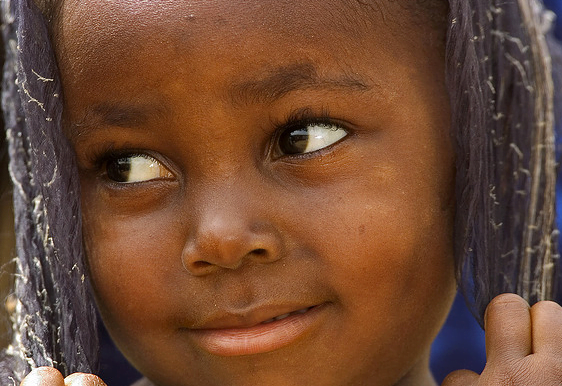Ed note. This is a special guest post from Tamara Kreinin, the Executive Director of Women and Population at the United Nations Foundation.
Not long ago I walked the onion fields of rural Senegal with the local farmers. To my surprise and dismay, most of them were teenage girls, strong and bright, but ill prepared for the job. I was once again struck by the vast difference between these girls and the girls in my day-to-day life in the US: the girls of Senegal struggling with early marriage, pregnancy, and the need to leave school for hard labor; my nieces, applying for college and not having enough time for all the activities they are offered. I often say that girls globally are equally talented but do not have equal opportunity. Their opportunity depends on us.
One of the most invisible, yet hard working, populations in our world today are girls in rural settings. They face a triple threat: their age, gender and location make their realities particularly harsh. Their hard labor is unrecognized and unrewarded. Adolescent girls in rural areas spend up to 15 hours a day fetching water and firewood and doing household chores. They care for others – younger siblings, older family members, livestock and fields; but their own growth, education, and health is often put on hold. They suffer from malnutrition, have little opportunity for basic education, and are vulnerable to violence, early marriage, and severe complications or death from pregnancy.
When we invest in the education, health, and safety of adolescent girls, they can become a significant piece of the puzzle to help reverse the poverty of rural people and put nations on the path to greater food security. A new report by the Chicago Council on Global Affairs, Girls Grow: A Vital Force in Rural Economies, demonstrates that the world’s roughly 283 million rural adolescent girls are positioned to become powerful agents of change in their communities and nations, if we give them a chance to become healthy, educated and empowered. If girls had the same access to resources, attended school, and were free from violence and early marriage, national agricultural output could increase by 2.5 to 4 percent, and the number of undernourished people could be reduced by 12 to 17 percent
It is smart mathematics: if a girl stays in school, remains healthy, and gains skills, she will marry later, have fewer and healthier children, and earn an income that she’ll invest back into her family and community. In fact, women and girls reinvest 90 percent of their income in their families and communities, compared to only 30-40 percent for men. Girls have the powerful potential to be innovators, entrepreneurs, and leaders in their communities.
Adolescent girls must be a key part of conversations about successful rural economic development strategies, as they are many of the world’s current and future farmers and community leaders. If empowered as decision makers, adolescent girls can help us tackle the economic, social, political, and environmental challenges of their rural homes.
Adolescent girls are part of the solution. With support and knowledge, adolescent girls can organize groups, be catalysts behind expanded technology use and experimentation, and be natural stewards of the environment. When I visited Africa last summer, adolescent girls told me they wanted to be doctors, lawyers, and Prime Ministers. We know that girls can be leaders and spokespeople in their communities and countries, so long as we amplify their voices. Adolescent girls must be heard—by their families, community leaders, donors, governments, and in the strategies of humanitarian assistance.
Real change starts with a girl.
Tamara Kreinin is the Executive Director of Women and Population at the United Nations Foundation. Girls Grow: A Vital Force in Rural Economies is the newest addition to the Girls Count series, the first critical body of research focused exclusively on adolescent girls in developing countries.
